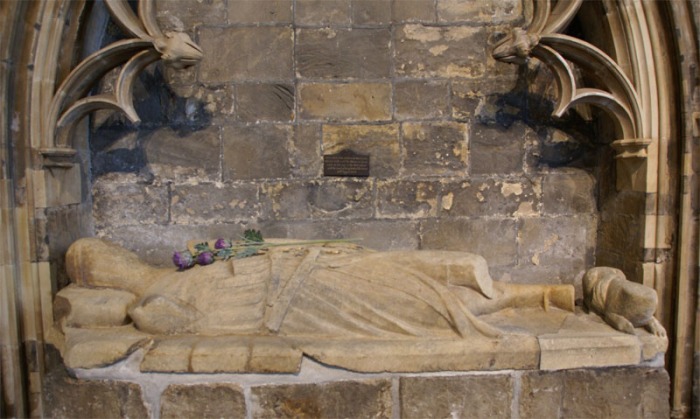 King Robert the Bruce, arguably one of Scotlands greatest ever figures.
King Robert the Bruce, arguably one of Scotlands greatest ever figures.
Born in Turnberry, Ayrshire in 1274, ‘the Bruce’ went on to become one of Scotlands key leaders alongside William Wallace in the furious war of Independence against England 1296 – 1314).
The Bruce ascended the Scottish Throne in 1306 and after years of hardship and conflict he ultimately led his people to victory at the famed Battle of Bannockburn, and in the process, secured Scotlands independence.
The Bruce reigned as Scotlands King for a further 15 years before succumbing to what is believed to be Leprosy.
Just before he died, he turned to his long time loyal friend and many a battle companion and made his dying request that his heart be carried on Crusade to the Holy Land and there (it is believed) to be buried in Jerusalem.
That man entrusted with the Bruce’s heart was none other than ‘The Good Sir James Douglas’ or otherwise known as ‘the Black Douglas’ – depending on which side of the border you resided.

James led a brutal guerrilla war against the occupying English in his lands, most notable was ‘the Douglas Larder’ where James and his men slaughtered the English garrison occupying his own Douglas Castle.
Born in 1286, son of Sir William Douglas the Hardy. The young James was sent to safety in Paris as the wars against England began.
At age 12, his father, a staunch supporter of William Wallace, was captured by the English and died in captivity at the Tower of London. The Douglas lands were confiscated by the English crown and given to Robert Clifford. A decision that would prove costly to the English crown.
Sir James was, in every essence, a warrior. It is said he fought in over 70 battles, of which he was triumphant in fifty seven. Taking the war to England, he laid waste to the northern counties as far south as Yorkshire; striking fear into English households who dubbed him ‘the Black Douglas’. A name synonymous to Sir James and the Clan.
These exploits aside, he is best remembered for his role in the Battle of Bannockburn, where he commanded the left flank of the Bruce’s victorious Scottish Army and most notably of all his Crusade to the Holy Land in an attempt to fulfill his Kings dying wish.
Unfortunately his Crusade was short-lived and Sir James fell in battle against the Moors in what is now Southern Spain at the Battle of Teba. The body of Sir James and the heart of Robert the Bruce were returned to Scotland for burial.

Ever since Sir Jame’s fateful journey the symbol of the heart, symbolizing King Robert the Bruce and loyalty has been an important feature to Clan Douglas. Although, strangely, it is not represented on the Clan Crest the heart symbol features strongly in many Douglas family heraldic symbols such as banners, Coats of Arms, seals and shields. Even Clan Douglas organisations like our own, we feature the heart and crown on our banner.
Today Scotland is experiencing a new resurgence of independence and sovereignty. Amid this nationalistic fervor symbolic gestures play an important role in unifying a nation.
What better symbolic gesture would there be than to honour the last dying wish of Scotlands greatest King? To take the Bruce’s heart to the Holy Land for burial at Jerusalem.
Featured image: The marker stone at Melrose Abbey, sealing the burial spot of the heart of King Robert the Bruce was designed by Victoria Oswald and carved from Scottish sandstone by the stonemason Hugh Durrant. Rising only a few inches above the turf, it depicts a heart and a saltire and bears an inscription taken from Barbour’s poem: “A noble hart may have nane ease. Gif freedom failye.”

Wonderful history! I wrote a post on Rosslyn chapel and the Sinclairs on my blog mentioning that they had attempted to bring the heart of Robert the Bruce to the Holy Land. Although it was an older post I just linked yours to it.
https://cybeleshineblog.wordpress.com/2014/10/04/rosslyn-chapel/
LikeLiked by 1 person
Thank you so much! And your blog is wonderful. Duly followed. 🙂
LikeLiked by 1 person
🙂
LikeLike
We should surely honor Robert the Bruce King of Scotlands request to take his heart to Jerusalem and those if us with Douglas blood should push to make this happen
LikeLike